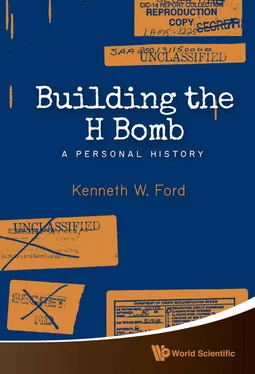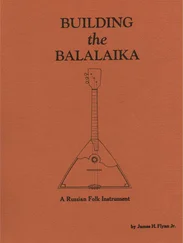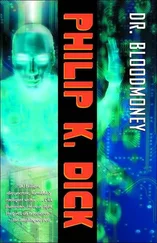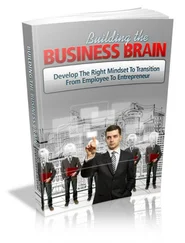When I put it all together, and despite Carson Mark’s version of events, I have to conclude that Ulam did have a thermonuclear weapon in mind when he barged into Mark’s office. Yet he may not have understood the full benefit of compression, and he had surely not thought about radiation as the mechanism of compression. As to Teller, I have to conclude that, despite his later testimony about his thinking in December and January, his ideas about radiation implosion and the equilibrium Super had not gelled prior to his February meeting with Ulam.
When I entered Princeton’s graduate program in physics in the fall of 1948, the remotest thing from my thoughts was that two years later I might find myself in New Mexico working on the hydrogen bomb.
I was one of a dozen new graduate students in physics that fall. We all aspired to a doctorate. Most of us imagined—and indeed most of us did achieve—a career in academia. At that time, the master’s degree in physics at Princeton, although it could be a stepping stone on the path to the Ph.D., served also as a consolation prize for those few who fell short of qualifying for the Ph.D. That’s one reason I have no master’s degree. It just wasn’t something you spoke proudly of earning. The other reason was that it entailed a fee of $25, a sum I didn’t want to part with in 1950 when I was offered the degree.
The standard path for physics graduate students at the time was two years of course work, followed by a several-day “qualifying exam”—mostly written but partly oral. Taking that exam had three possible outcomes: failure, a rarity; a squeaky pass, good for a consolation master’s degree; and a solid pass, which opened the turnstile to dissertation research and a possible Ph.D. A couple of the group managed to get through that turnstile after only one year. I, like most of the rest of us, did so in May 1950, after two years. Although seeking out a dissertation adviser and embarking on research before taking the qualifying exam was a possibility, most of us (including me) waited. In due course, we earned our Ph.D. degrees, four in 1952 after four years as graduate students, three (including me) in 1953, and the others in 1954 and 1955, except for my brilliant, multi-talented friend Gene Saletan, who finally pulled it off in 1962. (Gene was, among other things, an accomplished folk dancer. That’s an avocation I pursued for many years, although never with his special grace.) One of our group, Tor Staver, from Norway, tragically died on March 1, 1952 {1} when he lost control on a ski slope in New Hampshire and ran into a tree at high speed. The authorities at Princeton decided that he was far enough along in his research to merit the doctoral degree, and it was awarded posthumously that June. {2}
One of the students finishing in 1952 was Silvan (Sam) Schweber. Not many weeks had passed in the fall of 1948 before we had him pegged as the smartest guy (we were all male) in the group. He didn’t disappoint. Sam went on to do notable work in theoretical physics, co-authoring an advanced text with the future Nobelist Hans Bethe, {3} then in his later years becoming a distinguished, prize-winning historian of science. {4} In 2012, at the age of 84, he published a biography of Bethe {5} that garnered what, in the world of scholarship, could be called rave reviews. {6}
Two other 1952 Ph.D.’s from my group were David Carter, a Canadian, and Lawrence (Larry) Wilets, from Wisconsin. Besides being fast-track graduate students, they were, as it happened, both bridegrooms at an early age. Larry was already married when he arrived in 1948, and David got married the next year. Both, as it turned out, joined the H-bomb design effort in 1951 when a branch of it moved from Los Alamos to Princeton (much more on that later). For them as for most of us who were involved, more than patriotism no doubt played a role. The pay was good (close to that of an assistant professor [16]) and the physics was fascinating.
In the spring semester of my first year at Princeton, I took a course on classical mechanics from John Wheeler. That is a traditionally unexciting course, just something that has to be absorbed and endured. Classical mechanics is the seventeenth-century science of Isaac Newton as refined and mathematically polished in the eighteenth and early nineteenth centuries. It includes none of the exciting physics of the late nineteenth and early twentieth centuries—thermodynamics, electromagnetism, relativity, and quantum physics. But, as it turned out, John Wheeler didn’t believe in unexciting physics. He was determined to look at classical mechanics in a new way—for instance, to find every mathematical link it had to quantum mechanics, and to search out applications that may not have been considered before, such as to the motion of a hypothetical magnetic monopole (no real ones have been found yet) under the influence of electrically charged particles.

John Wheeler, unknown date.
Courtesy of AIP Emilio Segrè Visual Archives.
Some Princeton professors came to class meticulously prepared, delivering polished lectures and neatly filling the blackboard with equations, left to right and top to bottom. John Wheeler walked into the classroom apparently prepared only with attitude and spirit. He would say to us, in effect, “Oh, yes, where were we? What exciting thing can we explore today?” Then he would lead us down some byway that might or might not arrive at an interesting result, all the while putting on the board as many drawings as equations. (Wheeler was ambidextrous, writing, drawing, and erasing, sometimes simultaneously, with whichever hands were handy.) Some of my fellow students were drawn to the more polished professors. I was drawn to the slightly wilder Wheeler. “He’s the guy I would like to work with on my doctoral research,” I said to myself. A year later, I had the chance to approach Wheeler to put that thought into the form of a request.
Wheeler departed with his wife and three children for France aboard the SS United States on June 29, 1949, {7} not long after completing that course on classical mechanics. Their first destination was St. Jean de Luz in the south of France, where a Princeton graduate student, John Toll, joined them. (Toll, later an important part of the H-bomb design team, and still later President of the University of Maryland system, had started his graduate work earlier than I and, in 1949, was already embarked on his dissertation research.) Wheeler’s “holiday” in St. Jean de Luz naturally included physics.
Supported by the John Guggenheim Foundation, Wheeler planned to spend most of his sabbatical year 1949-1950 in Paris, “with side trips to Copenhagen,” {8} where his former mentor and idol Niels Bohr held forth. As Wheeler explained in his autobiography: {9} “Although I wanted to work with Bohr, I did not want to get back fully into the conversational culture of his institute. I wanted time for isolated thinking and calculating, and knew that it would be an easy matter to travel by train from Paris to Copenhagen as often as I wished during the year.” As fodder for his “isolated thinking,” he had in mind a world made entirely of electrons and positrons and a world in which space and time were unnecessary, or at best auxiliary, concepts. A more down-to-earth problem that he mulled in late September, sitting in a train on his way back to Paris from his first “side trip” to Copenhagen, was why certain atomic nuclei were so markedly distorted away from spherical shapes (they posessed unexpectedly large “quadrupole moments”). {10} At the time, the “liquid-droplet” model of the nucleus, predominant in the 1930s and early 1940s, was giving way to the “independent-particle” model. Physicists were coming to understand that the nucleus had not just the properties of a liquid, but also the properties of a gas. Wheeler’s insight on this train ride was to realize that the two models could be combined to account for the notably ellipsoidal shapes of some nuclei. A particle within the nucleus—a proton or neutron—could whirl around like a gas molecule in such a way as to press outward on the nuclear “skin” and distort it.
Читать дальше












